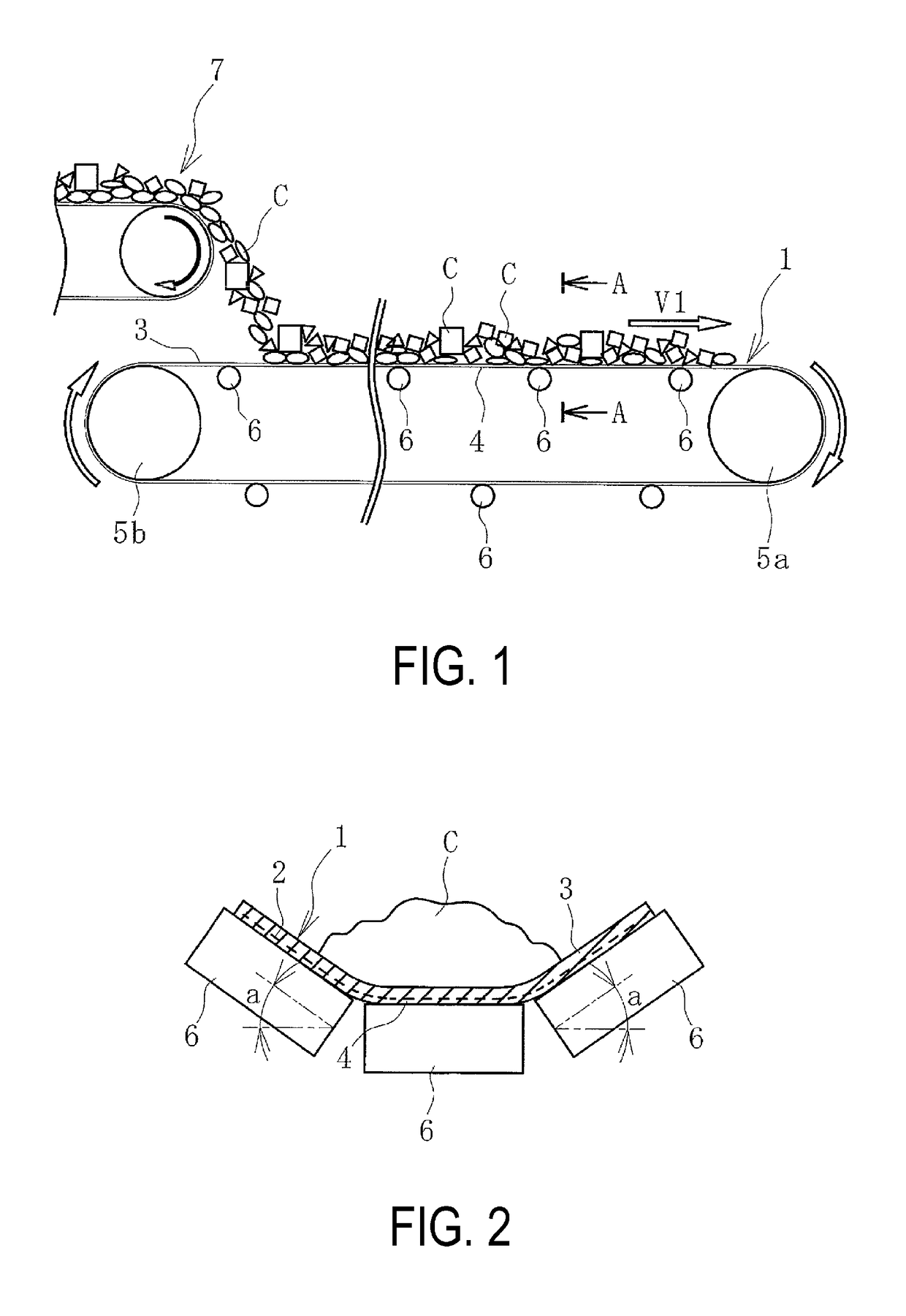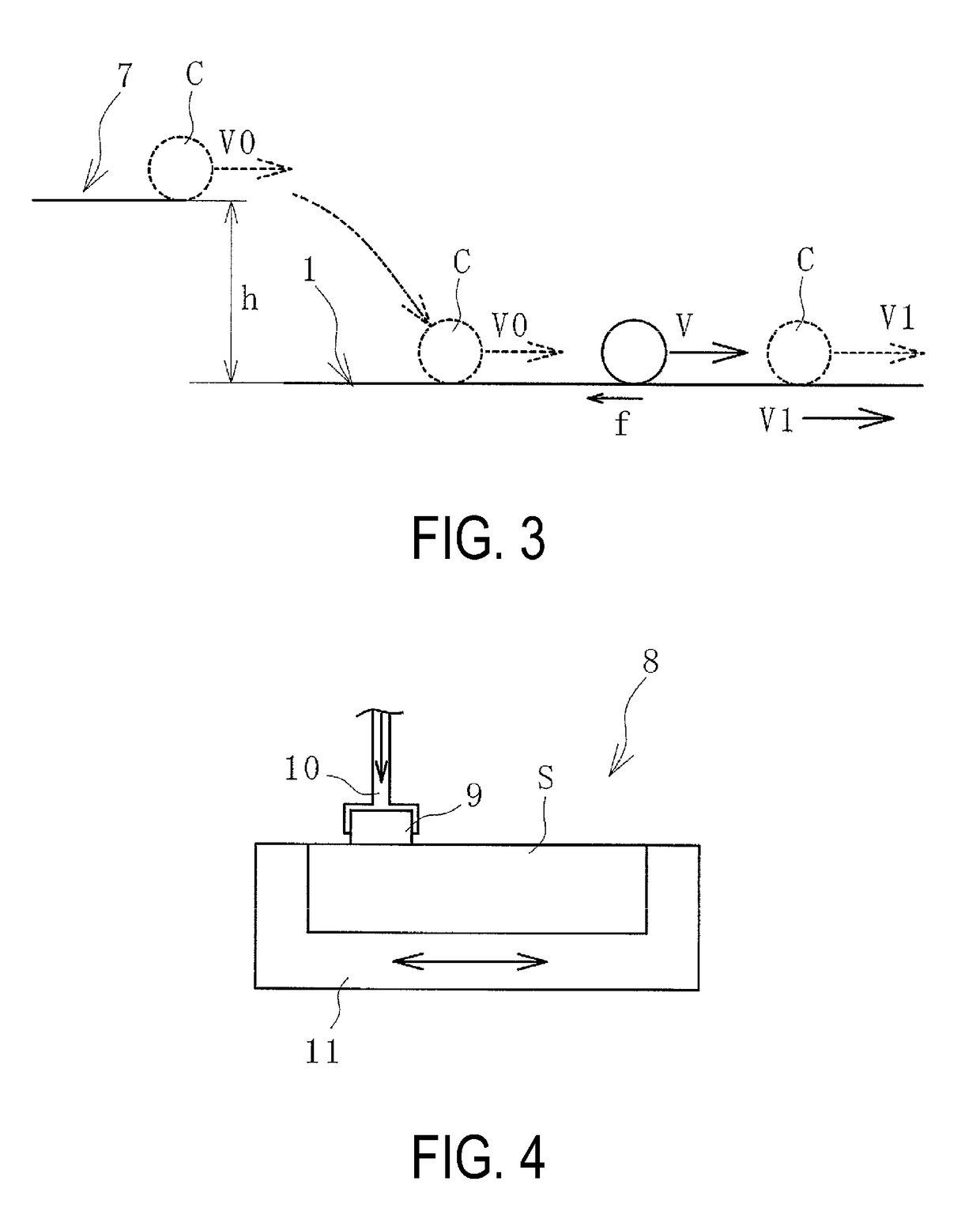Method of recognizing conveyor belt wear condition
a technology of wear condition and conveyor belt, which is applied in the field of recognizing the wear condition of conveyor belts, can solve the problems of large deviation between the actual wear resistance of the conveyor belt the wear resistance obtained by these conventional evaluation methods, and the wear condition of the upper cover rubber at the use site, so as to achieve accurate recognition, high correlation between apparent compressive stress and the amount of wear per unit frictional energy, and high degree of frictional energy
- Summary
- Abstract
- Description
- Claims
- Application Information
AI Technical Summary
Benefits of technology
Problems solved by technology
Method used
Image
Examples
Embodiment Construction
[0022]A method of recognizing a conveyor belt wear condition according to the present technology will be described below based on embodiments illustrated in the drawings.
[0023]In a conveyor belt line illustrated in FIG. 1, an object to be conveyed C conveyed by another conveyor belt 7 is fed onto a conveyor belt 1 and conveyed to a conveying destination by the conveyor belt 1. The object to be conveyed C may be fed onto the conveyor belt 1 by a hopper or the like. The conveyor belt 1 is stretched at a predetermined tension between pulleys 5a and 5b.
[0024]As illustrated in FIG. 2, the conveyor belt 1 is configured from: a core layer 2 formed from a core as canvas, steel cord, or the like; and an upper cover rubber 3 and a lower cover rubber 4 that sandwich the core layer 2. The core layer 2 is a member bearing a tension that stretches the conveyor belt 1. The lower cover rubber 4 is supported by a support roller 6 on a carrier side of the conveyor belt 1, and the upper cover rubber ...
PUM
| Property | Measurement | Unit |
|---|---|---|
| compressive stress Pe | aaaaa | aaaaa |
| compressive stress Pe | aaaaa | aaaaa |
| compressive stress Pe | aaaaa | aaaaa |
Abstract
Description
Claims
Application Information
 Login to View More
Login to View More - R&D
- Intellectual Property
- Life Sciences
- Materials
- Tech Scout
- Unparalleled Data Quality
- Higher Quality Content
- 60% Fewer Hallucinations
Browse by: Latest US Patents, China's latest patents, Technical Efficacy Thesaurus, Application Domain, Technology Topic, Popular Technical Reports.
© 2025 PatSnap. All rights reserved.Legal|Privacy policy|Modern Slavery Act Transparency Statement|Sitemap|About US| Contact US: help@patsnap.com



